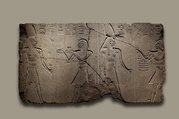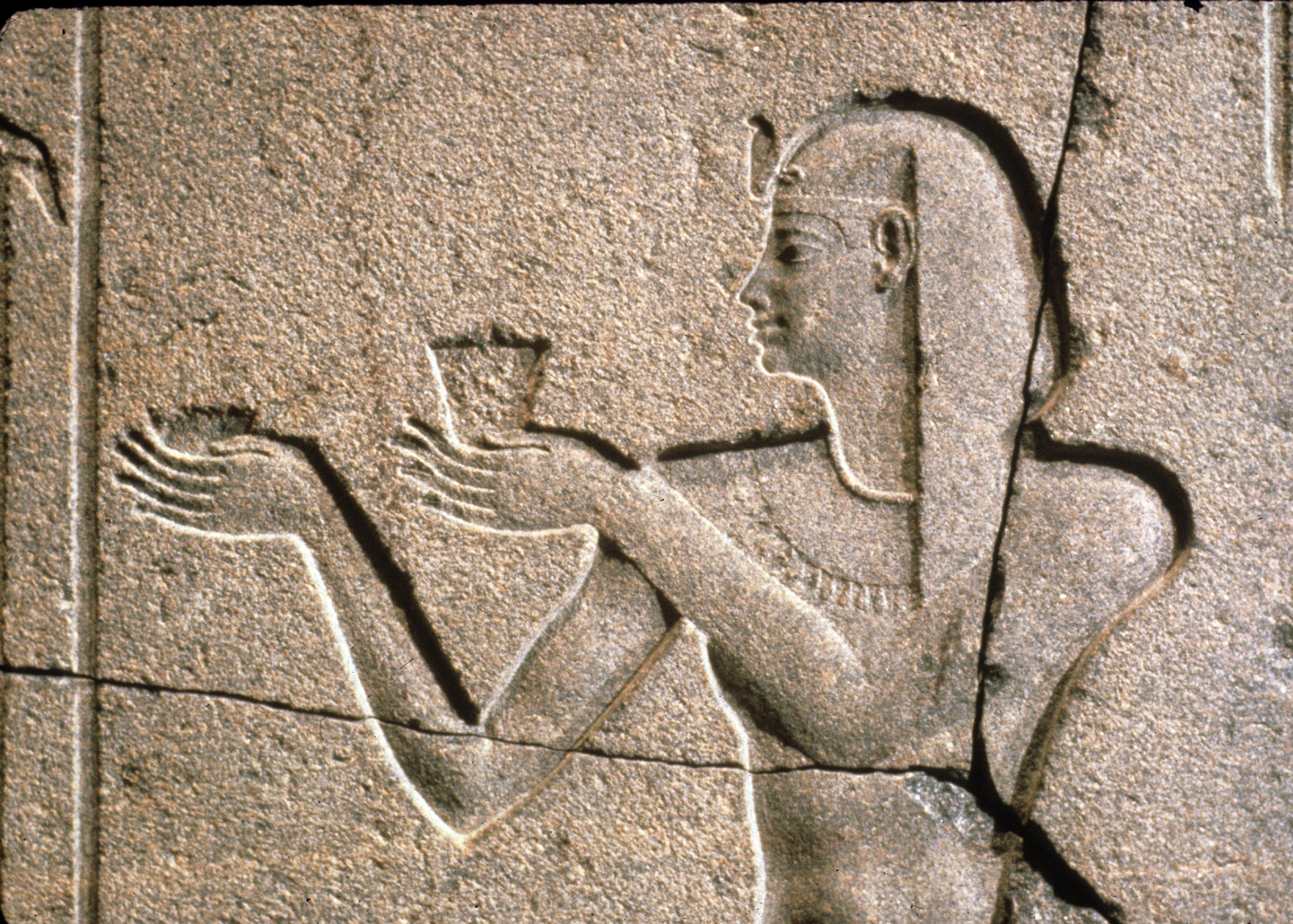Nectanebo II Offers to Osiris Hemag
Late Period
The Iseum, or temple of Isis, at Behbeit el Hagar in the central Delta was built as a great cult center for Isis, who was worshipped there as almost a primordial principle: thanks to her actions, the resurrections and transformations of her husband Osiris were assured, and hence the birth and potency of their son Horus, the divine prototype of the king.
The Iseum probably stood on the site of an earlier temple begun in the twenty-sixth dynasty. Nectanebo II built most of the great temple, and constructed it of dark granite, creating an imposing severe structure typical of thirtieth dynasty construction in the Delta. The king was able to decorate only one important chapel before the second Persian invasion. Work did not recommence until the reign of Ptolemy II, who completed the decoration of the sanctuary and chapels. Finally, Ptolemy III added and decorated the hypostyle hall and western façade.
Sometime after Ptolemy III in the third century B.C. but before the early third century A.D.., the temple collapsed completely. There is reason to believe that serious foundation problems undermined the structure relatively soon after its erection, and then, perhaps in 24 B.C. an earthquake completely tumbled the structure.
Nectanebo II had virtually completed the decoration of the chapel for Osiris Hemag that stood on the roof of the temple. This aspect of the god represents a key moment in the liturgical transformation of Osiris at Behbeit el Hagar, and the chapel was probably viewed as a priority in the ritual functioning of the temple. On this block the king offers incense and a collar to the god. Osiris has a non-mummiform appearance, as elsewhere at Behbeit el Hagar. The relief itself is unfinished—for example, the god’s scepter and ankh are missing from his hands in the right half of the block. An unusual feature in each scene is the vertical line separating the god from the offering king. The long, graceful figures are finely carved in the difficult stone. Stylistically, they show the very marked horizontal division of the torso into breast, chest, and abdomen that had become the norm in both relief and sculpture.
Due to rights restrictions, this image cannot be enlarged, viewed at full screen, or downloaded.
This artwork is meant to be viewed from right to left. Scroll left to view more.



